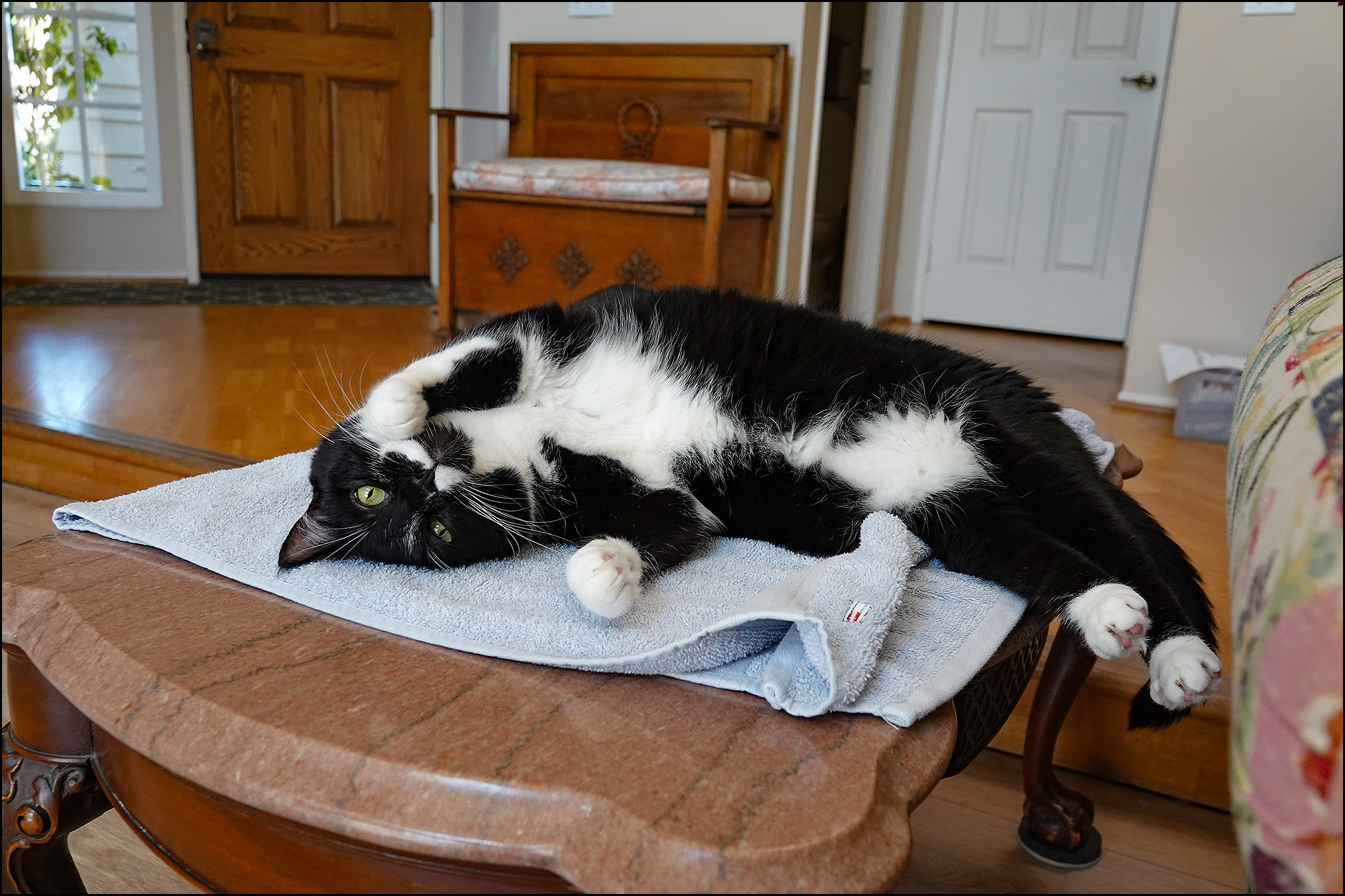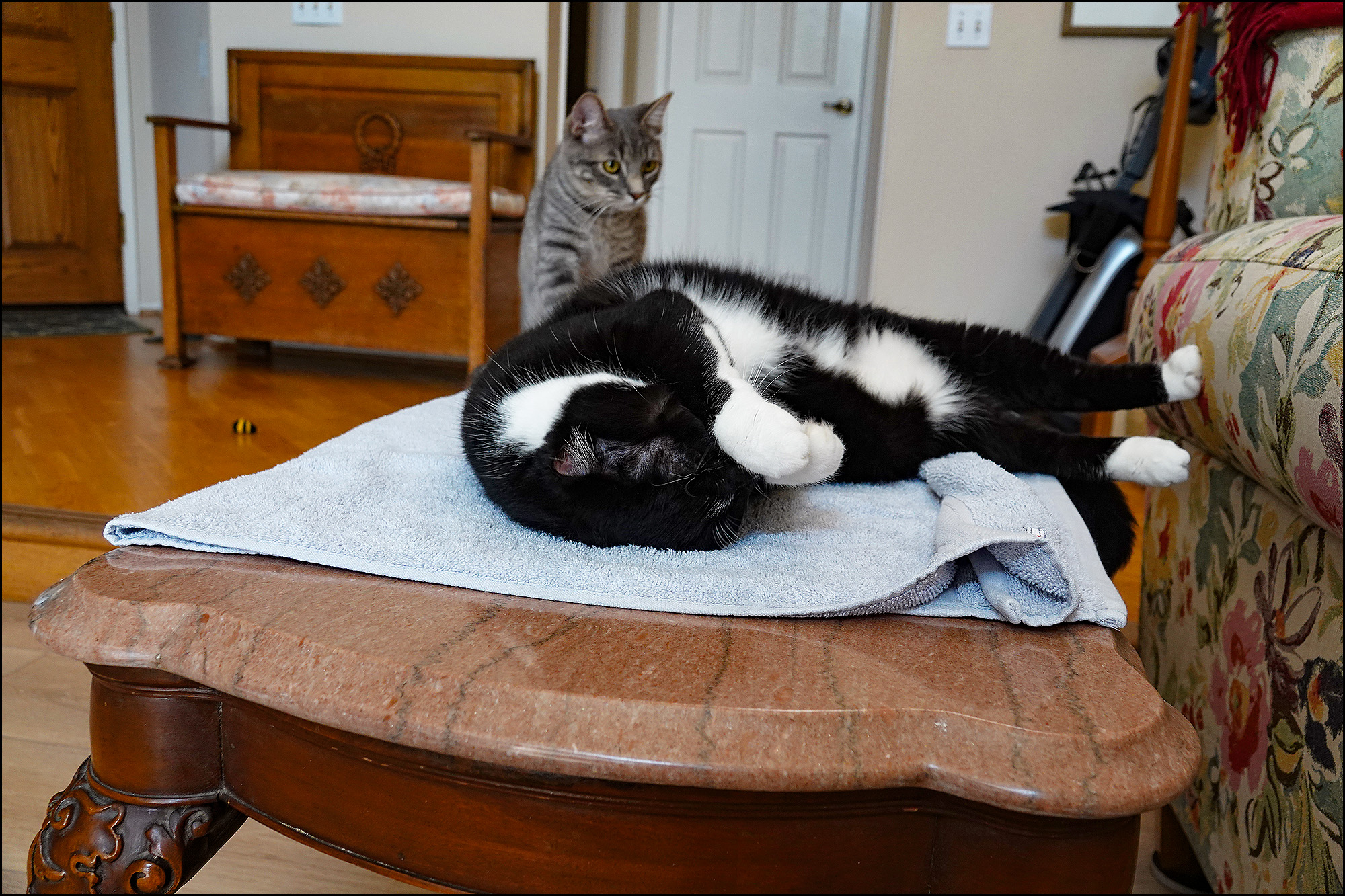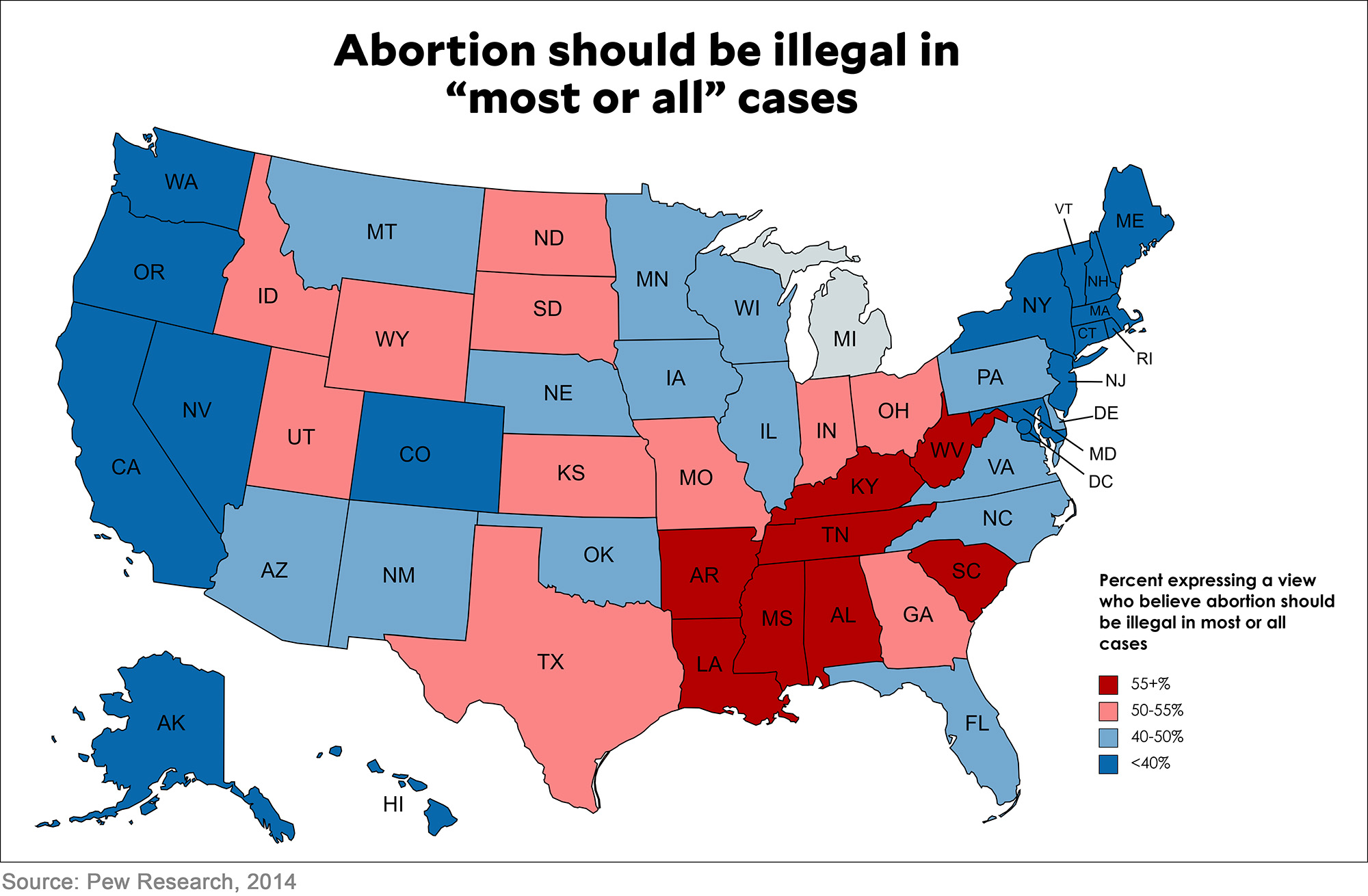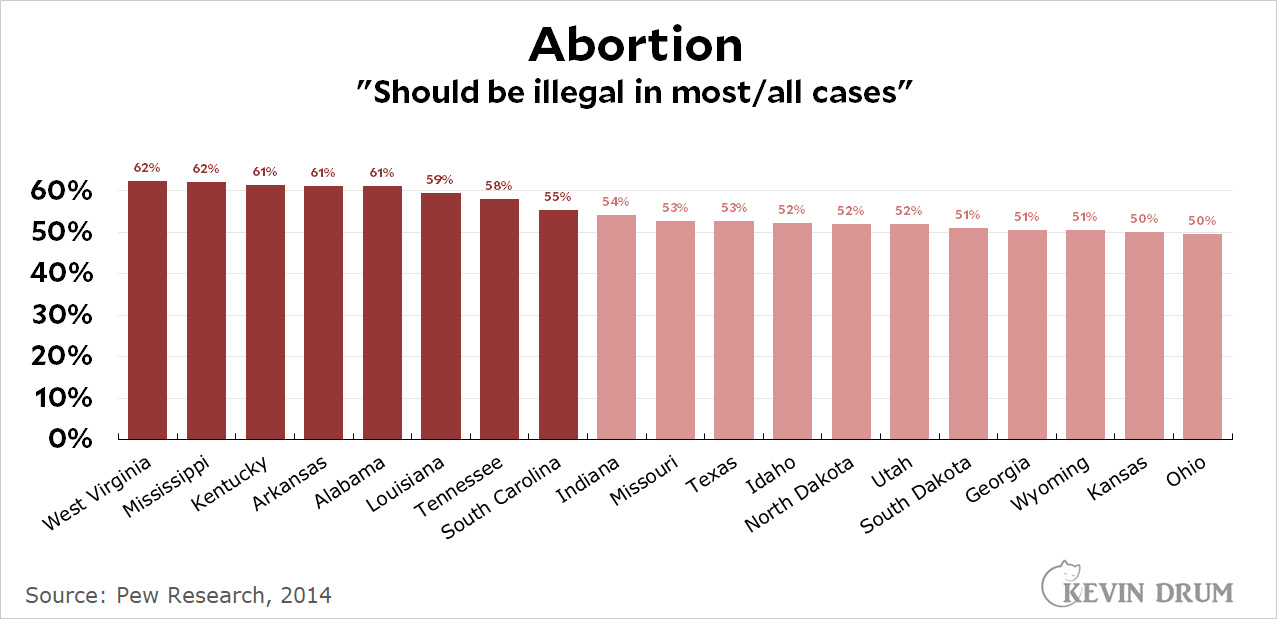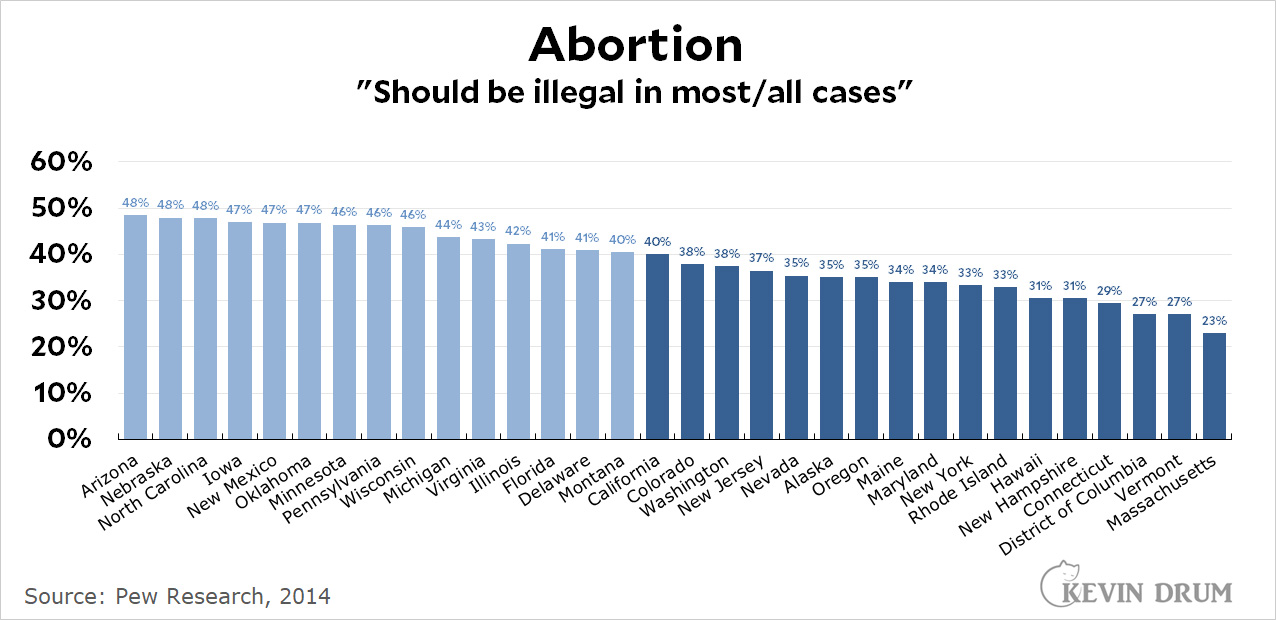Hilbert jumped onto our marble coffee table this morning and began rolling around deliriously. This attracted the attention of the camera, and eventually it attracted the attention of another cat, too.
Chart of the day: Net new jobs in April
The American economy gained 428,000 jobs last month. We need 90,000 new jobs just to keep up with population growth, which means that net job growth clocked in at 338,000 jobs. The headline unemployment rate remained at 3.6%.
 Among blue-collar workers, weekly wages were up 0.37% from last month. That's an annual rate of 4.6%, which is about -4% adjusted for inflation.
Among blue-collar workers, weekly wages were up 0.37% from last month. That's an annual rate of 4.6%, which is about -4% adjusted for inflation.
Among all workers, weekly wages were up 0.31% from last month. That's an annual rate of 3.9%, which is about -4.6% adjusted for inflation.
On a yearly basis, blue-collar wages were up 5.5%, which is about -3% adjusted for inflation. Among all workers, wages were up 4.6%, which is about -3.9% adjusted for inflation.
Here is the April unemployment rate for various races and education levels.
I am locked down
Well, partially. After four weeks of adjustments to my bionic lenses, they are as good as they're going to get. Yesterday was Phase One of locking them permanently into place, and next week will be Phase Two. At that point, the whole process will be done and I'll have fully adjusted artificial lenses in both eyes.
Thanks to a combination of dilation fluid and lens adjustment, my eyesight is pretty fuzzy for a day or two after treatment, which is why I didn't write anything yesterday. Today might be a little slow too since everything is a little blurry and shimmery at the moment. But soon it will all be over and my eyesight will be . . .
What? Only time will tell.
Lunchtime Photo
Today I have remarkable photographic news.
It starts pretty slow. Monday was dex day, so I decided to go out and look for the Milky Way again. I took it a little more seriously this time, driving out to Joshua Tree for some good night sky, but in the event I stopped a little short at a place called Whitewater Preserve. As it turned out, the night sky was good but not great on Monday, and the Milky Way was down very near the horizon. Since it was also in the southeast, that put it right above the light dome from Palm Springs. This is the best I could get:
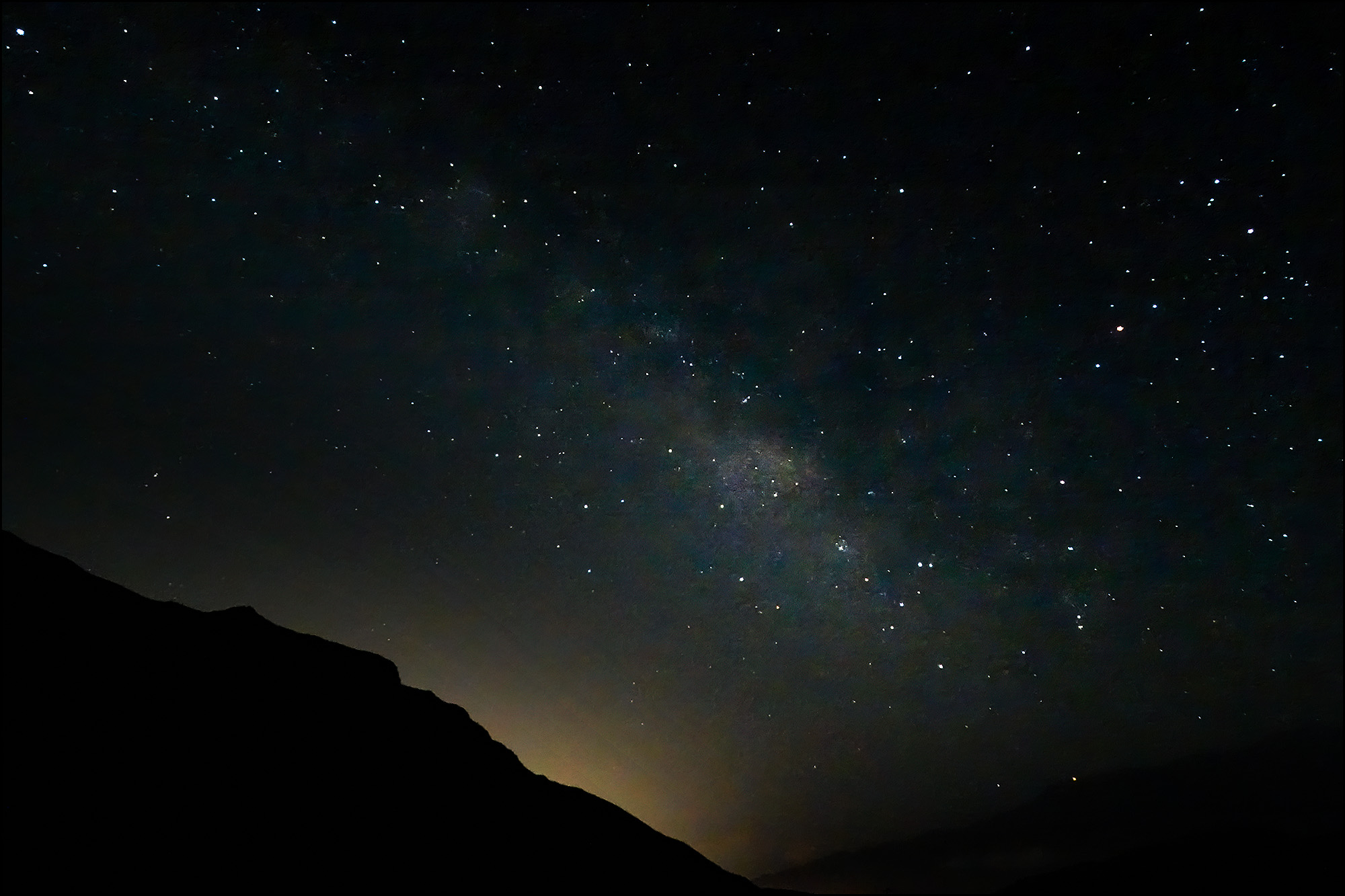
Even with a lot of editing in Photoshop, the light from Palm Springs was too strong to allow much of a view. You can see a bit of the galactic core, but that's it.
So I drove back down and then remembered that I had forgotten to give my cell phone a try. It's a Pixel 6 with "Night Sight" and I was curious to see what I could get from it. So I retrieved my cell phone bracket, got the phone attached to the tripod, and pressed the button. At that point, I was out from behind the shadow of the mountains and even closer to Palm Springs, which should have made things even worse. But after chugging along for four minutes, here's what it gave me:
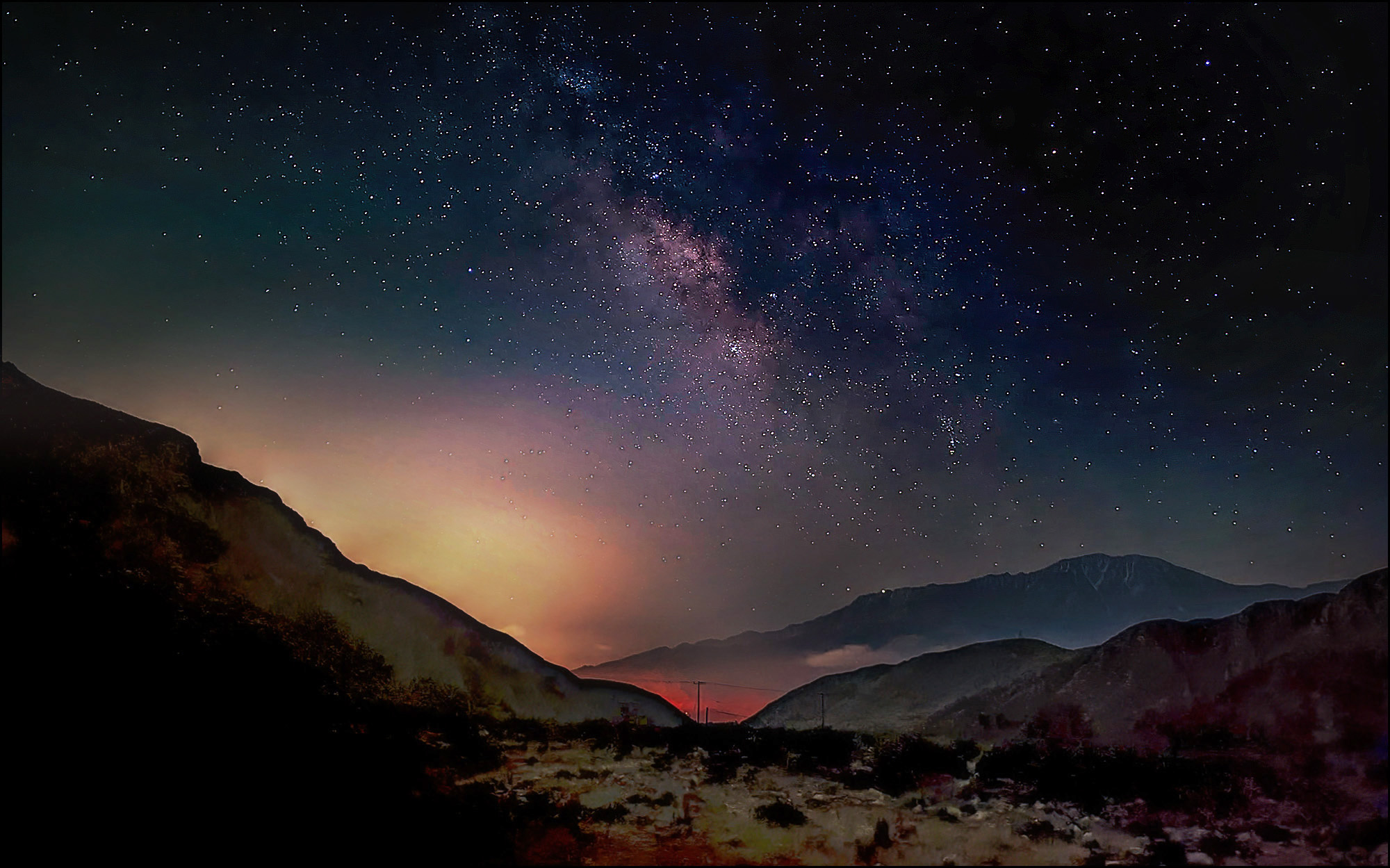
This has also been edited, but it's pretty remarkable nonetheless. The phone seems to expose different areas separately, which is how there's a bit of color and detail in the foreground.
The resolution of the phone is still considerably worse than my camera, and if I could ever figure out how to do image stacking properly I could get better results from the camera. Regardless, though, this is a surprisingly lovely picture from a tiny cell phone.
And here's another thing. The wind was so strong at the foot of the mountain that it kept blowing the tripod over. But the software in the camera was smart enough to know that whatever it was seeing after it got knocked over was obviously not meant to be part of the picture. So it removed it. This meant that it only got about 90 seconds of light capture instead of four minutes, but even that was enough to produce adequate results:
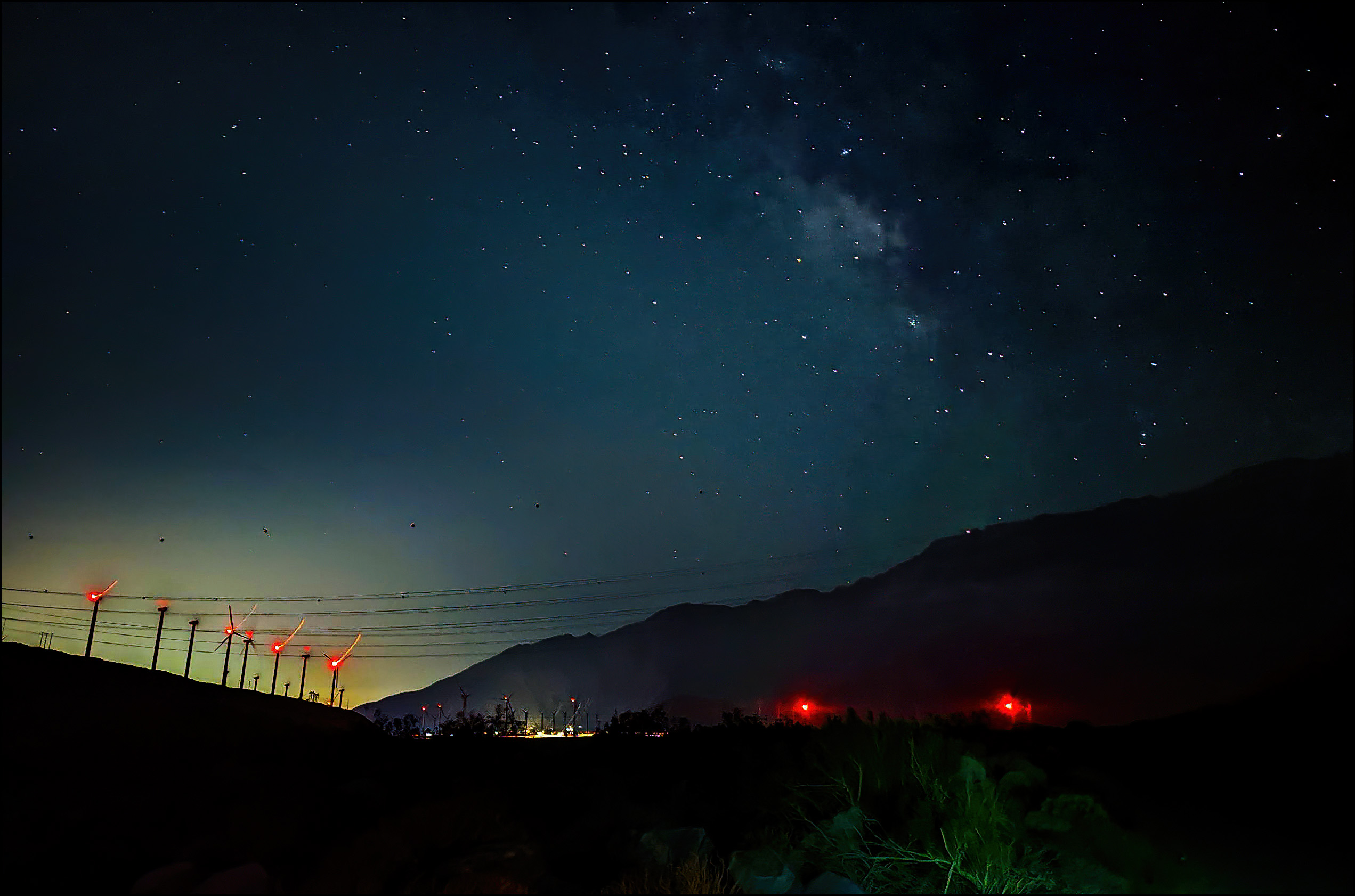
This is no great shakes, but it's not ruined either. All in all, an impressive performance from a little cell phone.
Here’s my plan to address homelessness in Los Angeles
The LA Times writes about homelessness today:
The Los Angeles mayoral primary has seen candidates throwing big numbers around concerning how much shelter they’d like to see built for homeless people. Rick Caruso wants 30,000 new beds in his first year in office, Rep. Karen Bass says 15,000 new beds in hers and Councilman Joe Buscaino wants 9,000 new beds within 36 months, to name a few of the candidates’ publicized ideas.
....The question is, if these beds are built, will homeless people use them? New research from the Rand Corp. suggests that the type of shelters that could end up being the centerpiece of multiple candidates’ homeless plans is not homeless people’s preferred destination....“There seems to be very low appetite among people to move into group shelters, which seems to be a key part of the landscape of a lot of mayoral proposals,” said the study’s lead writer.
No kidding. There surely isn't a single person operating in the homeless biz who doesn't know that group shelters are losers. Here instead is Kevin's Plan, which has the virtue of being something that would work. The downside—well, you can probably guess that. Here it is:
- Build about 30-40,000 simple family apartments meant for people who genuinely have short-term needs. These would come with rules, but not onerous ones: Kids have to go to school, you have to keep the place tolerably clean, etc.
- Build about, oh, 100-150,000 efficiency apartments in a few hundred buildings spread throughout the county. These would be small studios: bed, table, sink, kitchenette, toilet. Think old-school YMCA. Common showers would be available on each floor. Aside from destroying the property, there are no rules to speak of. You can come and go as you please. You can smoke, drink, take drugs, have visitors, whatever. The only real rule, maybe, would be an assigned hour each week that you have to leave your room to allow it to be cleaned. Light security would patrol the building and make sure that tenants don't harass nearby pedestrians and businesses.
- Finally, add a dozen big common shelters with cots. These would be intended for emergency use. Efficiency apartments would be available to anyone who wants one.
- If I had my way, the efficiency apartments and the common shelters would include a cafeteria that provides simple food. Cereal for breakfast. Sandwiches for lunch. Various kinds of heatable trays for dinner. Anyone should feel free to eat on the premises or not, as they wish.
- Other: include here all usual blather about help for the mentally ill, drug addicts, alcoholics, and so forth. I think that most of this doesn't work, but I'm happy to give it a try.
- Once this was done, we could reasonably make tent living on city streets illegal.
This would cost a lot of money, but we have a lot of money. The main problem, of course, is that no one would want any of these buildings across the street from where they live, and every single one would spend endless years in court trying to get built. Other than that, though, it would be great.
Nobody cares how badly Roe was written
For what it's worth, you should ignore all the folks talking about how badly Roe v. Wade was written. I've read plenty of commentary on this, and even liberal scholars mostly agree that Blackmun did a lousy job.
But it doesn't matter. The opinion could have been written by John Marshall himself and no one would care. Liberals wanted it to stay and conservatives wanted it to go. End of story.
Raw data: Views on abortion by state
There's not a ton of state-by-state polling on abortion, but when Roe v. Wade is overturned and control of abortion law is returned to the states this is suddenly going to become very important.
Here is a Pew survey from 2014 that asks whether abortion should be legal or illegal in "most or all" cases. I have eliminated the "don't know" respondents to produce percentages only among the people who have an actual opinion.
Lunchtime Photo
How long will we fight the Russians in Ukraine?
As I was trying to think of something else besides Roe v. Wade, it occurred to me this afternoon to wonder how long the Ukraine war was likely to last. We fought the Soviet Union as proxies in Vietnam for about a decade. We fought them as proxies in Afghanistan for five or six years. Now we're fighting them as proxies in Ukraine, and the harder we (and NATO) fight the longer the war is likely to drag out. This is especially true since this time the Russians are actually fighting instead of simply supplying their clients, and it's become clear that the Russian army is sorely incompetent.
On the other hand, the Russian objective seems to have shrunk considerably, so that should speed things up. But on the other other hand, the Ukrainians seem willing to fight for the Donbas pretty competently for approximately forever (eight years and counting at the moment).
But there are more hands in this argument than an octopus could handle. I've read dozens of reasons on both sides why this war could end fairly quickly or could turn into a long stalemate. And we'd be supplying weapons and sanctioning Russia the whole time.
My view of Russia is a pretty conventional one: I have nothing against the Russian people, and don't really blame them for being angry about how we handled economic reform in the 1990s and then pushed NATO almost to their new borders. Vladimir Putin, on the other hand, is just a thug. Even leaving his territorial ambitions aside, he just has no redeeming qualities.
So how long would we be happy fighting him? A year? Sure. Two years? Probably. Three? Four? More? We just finished up fighting two far more expensive wars that lasted more than a decade, so I suppose we could go at least that long in Ukraine.
But will we? Will Russia? Are we in for another forever war? Comments?
People are quitting their jobs at totally normal rates
Job openings and the number of times workers quit reached the highest levels on record in March, as a shortage of available workers continued to pressure the U.S. labor market.
Sure, this is true, and the BLS press release even said so. But who cares? Quits always go up when hires go up. Here's my inevitable chart:
 The recent record for quits as a percentage of hires was 68.26% in December. In March it was 67.33%. Not a record. And anyway, with the exception of the pandemic era, the trendline for quits as a percentage of hires has been rock steady for over a decade. There's absolutely nothing unusual going on right now.
The recent record for quits as a percentage of hires was 68.26% in December. In March it was 67.33%. Not a record. And anyway, with the exception of the pandemic era, the trendline for quits as a percentage of hires has been rock steady for over a decade. There's absolutely nothing unusual going on right now.

